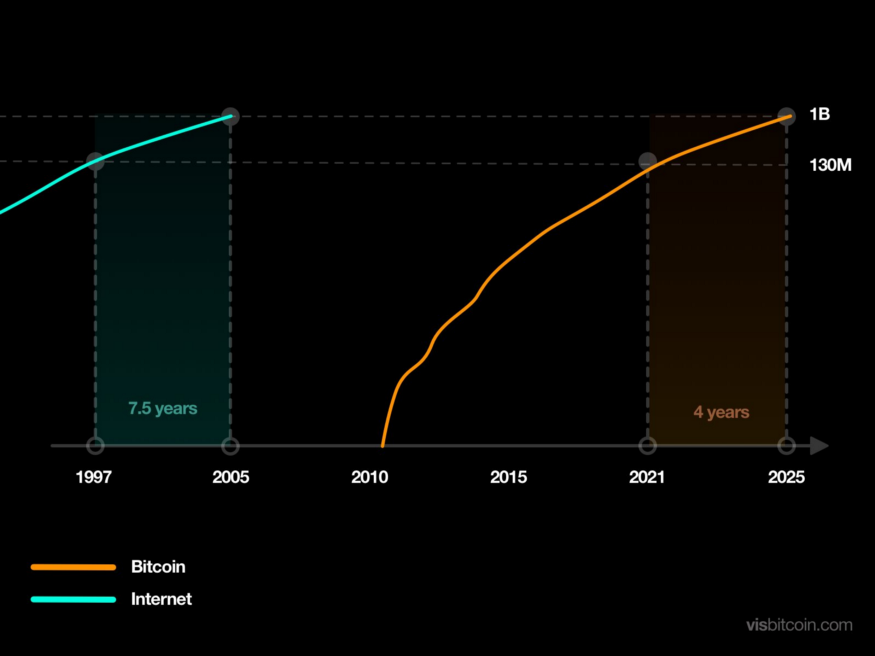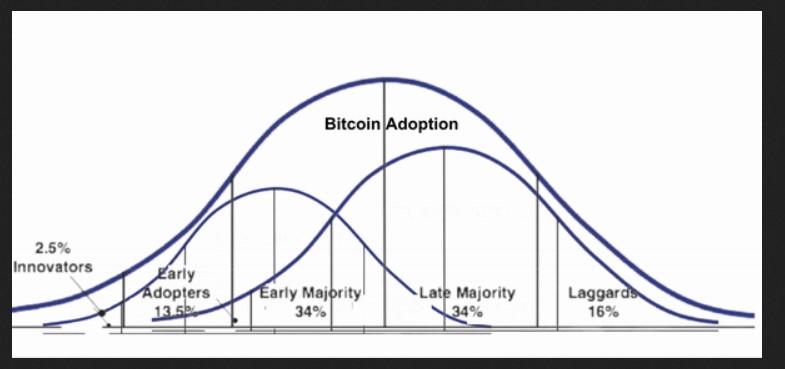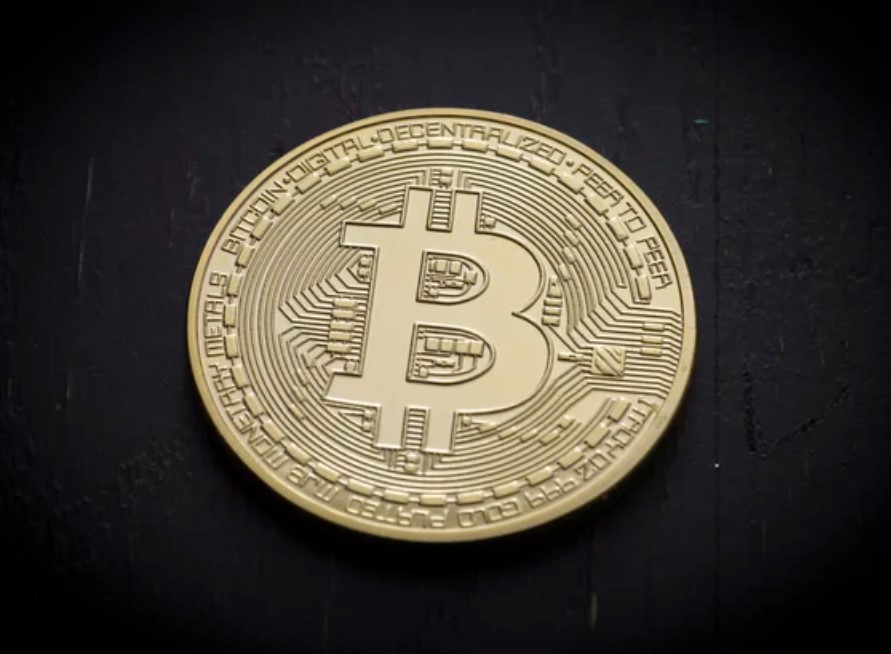Former Google employee Michael Levin has provided data on Bitcoin (BTC) impressive adoption growth rate since its inception in 2009. When compared to the Internet, PayPal, technologies such as mobile phones and other virtual banking tools, Bitcoin’s adoption rate is much faster. Levin said:
Despite the fear mongering, Bitcoin, like all innovative technologies before it, is following a predictable and transparent adoption curve, albeit, at an accelerated rate.
In only 12 years, Levin estimates that BTC reached 135 million users today with projections to have 1 billion users by 2025. In the chart below, it’s possible to distinguish that when the Internet was at the same point in its adoption curve, it took 7.5 years to reach 1 billion users. BTC will do the same in almost half the time.

Levin makes a distinction between Bitcoin, the monetary network, and bitcoin (BTC), the asset. The latter is the front and center of a new global narrative, the ultimate store of value, BTC as Gold 2.0. The former refers to the network that enables permissionless, censorship-resistant, and worldwide transactions. Both the asset and the network have different adoption curves.
Unlike Gold and the Internet, BTC and its network emerged in a historical and technological context which allows it to have a heterogenous adoption process. It can have different use cases for different investors. Although two separate things, the cryptocurrency benefits from the growth of the monetary network and vice versa.

Levin claims the cryptocurrency has reached a critical moment right on the verge of mainstream adoption. He adds:
these two adoption curves can occur concurrently with Bitcoin, the asset, kickstarting the adoption process which helps Bitcoin, the network, to ultimately send and receive value. (…) Furthermore, the overall Bitcoin adoption curve is reaching a critical moment. And, the interplay of these two curves will be critical for Bitcoin to reach the mainstream.
Bitcoin Adoption Still On Its Early Phases
As seen in the chart above, there are 4 phases in the adoption curve comprised of innovators, early adopters, early majority, late majority, and laggards. According to Levin, BTC has around a current 6.1% penetration rate.
However, the number of people “actively” investing could be much smaller. Levin estimates that around 2.2 billion people around the world have a wealth of over $10,000, enough to invest in BTC. From this data, he calculates a “conservative investor base denominator” in around 1.14 billion people. Thus, Bitcoin’s adoption rate is now on “the cusp of the early majority”.
The monetary network could in theory reach anyone with an internet connection. This is why Levin uses a higher denominator (4.66 billion with access to the internet) to calculate its penetration and adoption rate. With this denominator and its current 135 million as numerator, BTC has a 2.8% penetration rate. He adds:
Bitcoin, the asset, is likely crossing into the early majority while Bitcoin, the network, is on the cusp of moving from innovators to early adopters. So, overlapping the two, Bitcoin, overall, is still early in its adoption curve, likely somewhere in the early adopter phase.
By the start of the next decade, the cryptocurrency and its network should already be in the next phase of their adoption curves. With a strong early adopters base in the early majority, BTC will be one step closer to complete mainstream adoption. For those waiting for the revolution to be televised, it might already have begun.
By 2023 Bitcoin will go mainstream.
By 2025 it will be omnipresent.#Bitcoin pic.twitter.com/rjpKCIYjXs
— Visualize Bitcoin (@visbitcoin) April 25, 2021
At the time of writing, BTC trades at $38,700 after it was rejected on the $40,000 resistance zone. Lower timeframes are in the green, but higher timeframes still point to caution as BTC slowly recovers from a brutal crash.












